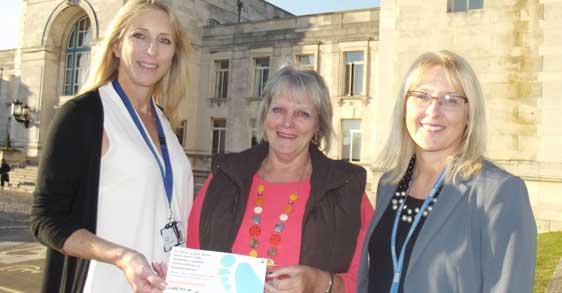
Pat needed to undergo a toe amputation due to her diabetes. She didn’t think complications would ever affect her and wants to encourage people to access their annual foot checks, in order to help prevent the problems she’s faced.
Pat Reynolds
Age 65
Living with Type 2 diabetes since 1993
“The experience of having a toe removed was emotionally traumatic for me.”
My diagnosis
My diabetes was picked up at a well woman clinic 25 years ago. However, my diagnosis didn’t really register and I spent a lot of time pretending it hadn’t happened. I would tell myself, “I’m not diabetic.” I think it’s very hard when you’re first diagnosed; the doctors tell you what the dangers are and how you could end up, but you can’t relate it to yourself because it’s too far ahead. I saw it as someone else’s future, not mine. Even on a practical level I remember thinking what a nuisance it was to get time off work for appointments, and to constantly be thinking about food and my sugar levels.
At the time of my diagnosis I had three young children and worked part time, so making lifestyle changes was definitely hard. I was initially prescribed Metformin but this made me feel very unwell and the side effects were upsetting. Therefore, the doctors eventually decided to put me on insulin.
Developing foot complications
I have neuropathy in my feet and seven years ago developed a sore on the fourth toe of my right foot. The sore turned into an ulcer and I needed to visit the community podiatry service weekly or fortnightly, depending on when appointments were available. Eventually, the infection spread to the bone and the doctors made the decision to amputate the toe.
This was an incredibly upsetting time for me and although the wound itself healed, it caused me a great deal of anxiety and stress. It was also made worse by the fact my mum was very sick at the time, so I wanted to get out of hospital as quickly as possible to be with her.
About a year later I developed charcot in my left foot, which took 18 months to heal. Sadly, two years later the same problem developed in my right foot, taking 20 months to heal. Then in November 2017 I got charcot in my right foot again, which has still not healed, but is managed by wearing a plaster cast or air cast boot.
The challenges of living with diabetes
The problems with my feet mean I now have to rely much more on my husband, who is very supportive. My work is really important to me and I wouldn’t be able to continue to do this unless he could drive me there. Diabetes has restricted my life in different ways, and no longer being able to drive is one of them. My husband also helps me get around in a wheelchair due to my lack of mobility, but this obviously limits us if we want to go on holiday, or do something as simple as going out for a walk or playing with the grandchildren.
Raising awareness
Nowadays there is so much more information and support available to people with diabetes. There’s education groups for those who are newly diagnosed, which is something I think would’ve really helped me. Raising awareness is something I feel strongly about and that’s why I decided to get involved with Diabetes UK’s Putting Feet First campaign. I also donated a shoe to the pop-up shop, Amp Shoes, in order to raise awareness of the importance of getting an annual foot check. Mine was one of 135 shoes on display to represent one of the diabetes-related amputations that take place each week in England.
I’m also really proud of being involved in improving foot care in my area. I spoke with the local health bosses in Southampton about my experience with the community podiatry service and how I felt my care could’ve been much better. This led to the introduction of a multi-disciplinary foot care team, which is shown to help prevent amputations.
I didn’t really realise the positive impact getting involved in campaigning would have and it really encouraged me to voice up. I just hope that with greater awareness we can help prevent more amputations.
